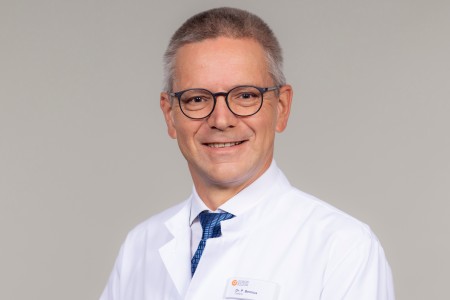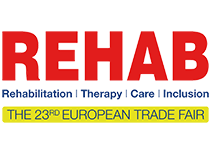Myofasciotomy - a minimally invasive treatment for shortened muscles
As part of the interdisciplinary therapist congress CON.THERA, Dr. Peter Bernius, Chief Physician of the Center for Pediatric and Neuroorthopedics at the Schön-Klinik, will provide information about the method of "Percutaneous Myofasciotomy".

As part of the interdisciplinary conference for therapists CON.THERA, Dr. Peter Bernius, Chief Physician at the Centre for Paediatric and Neuro-Orthopaedics at the Schön-Klinik, will provide information on the "percutaneous myofasciotomy" method.
In very simple terms, this relatively "bloodless procedure" involves feeling the surface of scars within a muscle, cutting them with a special, very short scalpel and splitting the fascia that envelops all muscles. This does not cause any new, large skin injuries and the still functional muscles are spared. The pain after the operation is significantly less and lasts for a shorter time. The important post-operative mobilization is easier because there is less loss of strength in the operated muscles.
Since 2008, this method has spread among many parents of children with cerebral palsy, particularly via the Internet. This is because the significantly less invasive procedure with almost invisible scars is less stressful for the children and their families who have to undergo many operations.
In principle, many muscle corrections on the arms, legs, trunk and even the head can be carried out in one operation under anesthesia. Patients of all ages remain in hospital for two to three nights and then have to exercise and move their "newly elasticized muscles" for several hours every day. The motto here is: "A lot helps a lot".
Background
Alternating loads stimulate muscle development in a healthy child, keeping the muscles elastic and resilient. Children with cerebral palsy (CP), but also stroke patients, always develop structural muscle changes, even though the lesions are in the brain and the muscles are not primarily affected. Reduced movement leads to shortening of the muscles. This in turn leads to spasticity and, over time, to scarring and hardening of the connective tissue and the fascial sheath around the muscle belly. As soon as this tissue is no longer elastic, pain-induced cramped postures develop. The joints become bent and immobile, resulting in damage and restricted mobility of the whole body.
In the orthopaedic treatment of CP in children, in addition to the necessary "major" bony operations on the hips, legs and feet, tendons are unfortunately still surgically lengthened to enable walking or a physiological sitting posture. Percutaneous myofasciotomy is an important addition to these classic treatment methods. Tendon lengthening should be avoided.
The earlier one begins with muscle maintenance therapy and thus prevents major consequential damage, the better the quality of life of the affected person will be. The muscle is constantly learning during infancy. These "learning experiences" activate further processes in the brain that children with CP miss out on. During child development, there are always relevant time windows that need to be used. If the muscles, and therefore the young patients, remain inactive, they can expect lifelong limitations that could perhaps have been avoided through early intervention.
"The correction options with this minimally invasive procedure are very good and, in our experience, are equivalent to the options available with open surgery. The duration of the procedure per muscle is short. Gaps can be cut in the hardened muscles in different areas of the body per anesthesia by making many small incisions. The immediately noticeable muscle relaxation together with the reduced after-effects of the operation lead to good acceptance among those affected and their relatives," summarizes Dr. Peter Bernius.
Patients come to Munich from Australia, Vancouver and Vladivostok. However, myofasciotomy is still viewed critically because there is too little research into it. "In children and adolescents with CP, it's not just about mobility in the arms and legs. We can also regulate the strong flow of saliva, which is socially very stigmatizing and stressful for those affected and their relatives. Children with CP are like top athletes: all medical professionals will try to get the best out of them to keep their quality of life high and enable them to participate. In this way, the necessary aids from orthoses to wheelchairs, standing trainers, therapy chairs and other adaptations can also be used more effectively," summarizes Dr. Bernius. His presentation of the Munich concept at CON.THERA conference is aimed at all interested parties. A good overview of all the aids and the opportunity to try out many of them will then be available in the exhibition halls at the 22nd REHAB in Karlsruhe from June 15 to 17, 2023.
Link tips for further information:

